Seaweeds of the South African South Coast


Order Gigartinales
Family Gigartinaceae
Gigartina paxillata Papenfuss 1947: 2-3, pl. 1: fig. 3; pl. 3: fig. 15; pl.4
Plants dark red to blackish-red, erect to loosely caespitose, with simple or forked blades bearing peg-like branchlets from surface and margins. Stipes terete to slightly compressed, to 1.5 cm long and 2 mm diameter, widening into blades up to about 20 cm long and 4 cm broad, 750-1250 µm thick, forked once or twice, bearing simple or forked marginal branchlets and simple or divided terete to slightly compressed papillate to elongated superficial and marginal outgrowths up to 1.3 cm long and 1.2 mm diameter. Cystocarps terminal or lateral on the marginal peg-like branchlets, 1-2 mm diameter, with distinct pericarp and terminal ostiole. Tetrasporangia in raised, lens-like sori formed in the cortex-medulla boundary, 150-1500 µm in diameter, on both the superficial and marginal outgrowths and the faces of fronds. Tetraspores formed by cruciate cleavage and released in gelatinous matrix.
Distribution and ecology
Recorded from De Hoop to Cove Rock, near East London (24-41), in the lower eulittoral zone.
World Distribution: South African endemic.
Type locality: Storms River, Tsitsikamma, South Africa (Papenfuss 1947).
Notes: 1. G. paxillata was not included in the species of Gigartinaceae examined by Hommersand et al. 1993. However, Levitt (1998) showed that this species is correctly placed within the genus Gigartina because it has “mature carposporangia in grape-like clusters and broadened pit-connections in the placental tissue, and “ tetrasporangia formed progressively at the cortex-medulla boundary and tetraspores released by excision of the entire sorus” unlike Chondracanthus, where tetrasporangia are formed within the cortex and tetraspores via a pore.
2. The specimen “Gigartina stiriata” from Port Elizabeth illustrated by Kylin (1938: fig. 12) appears to be G. paxillata.
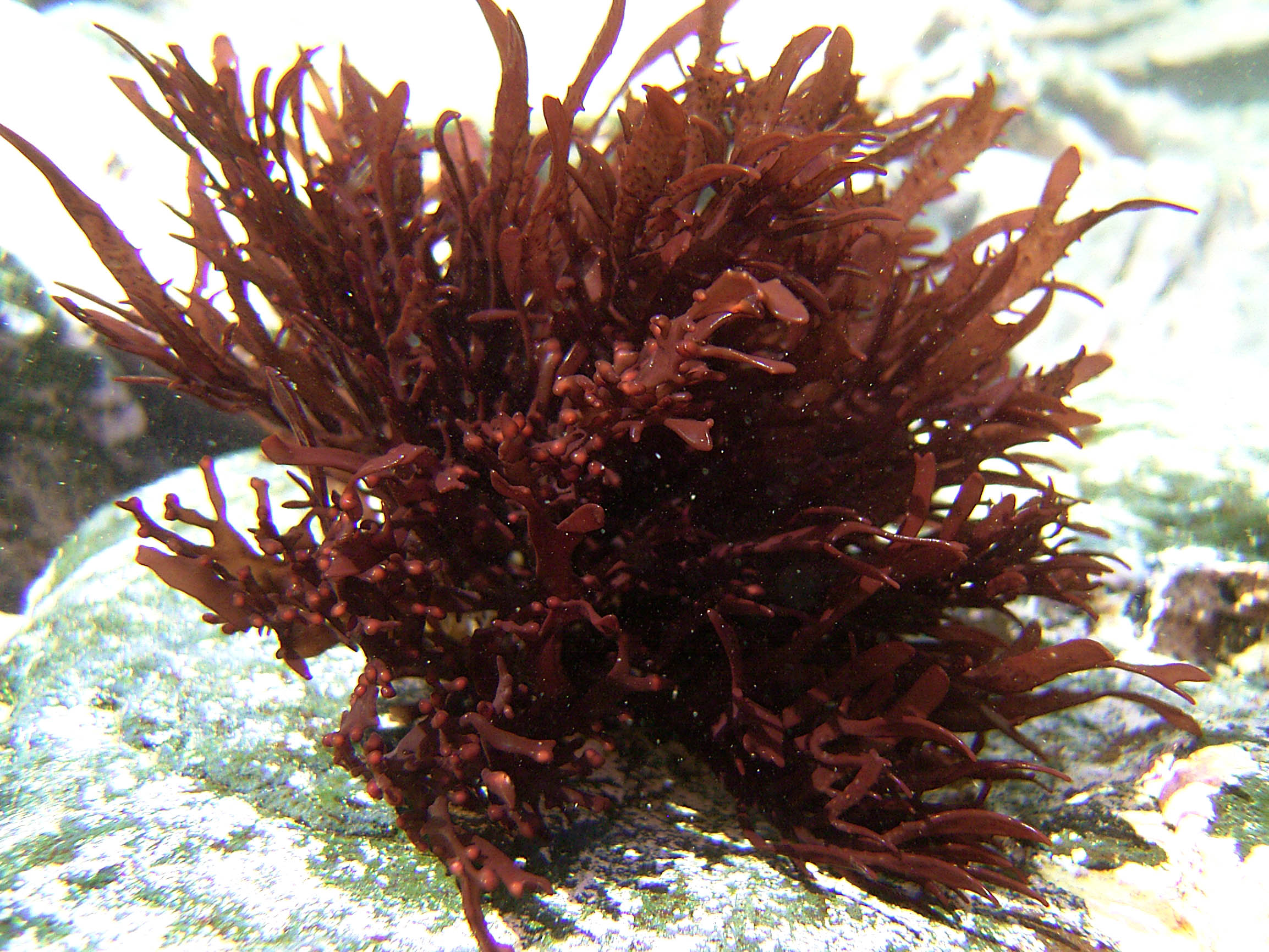
Gigartina paxillata, Natures Valley.
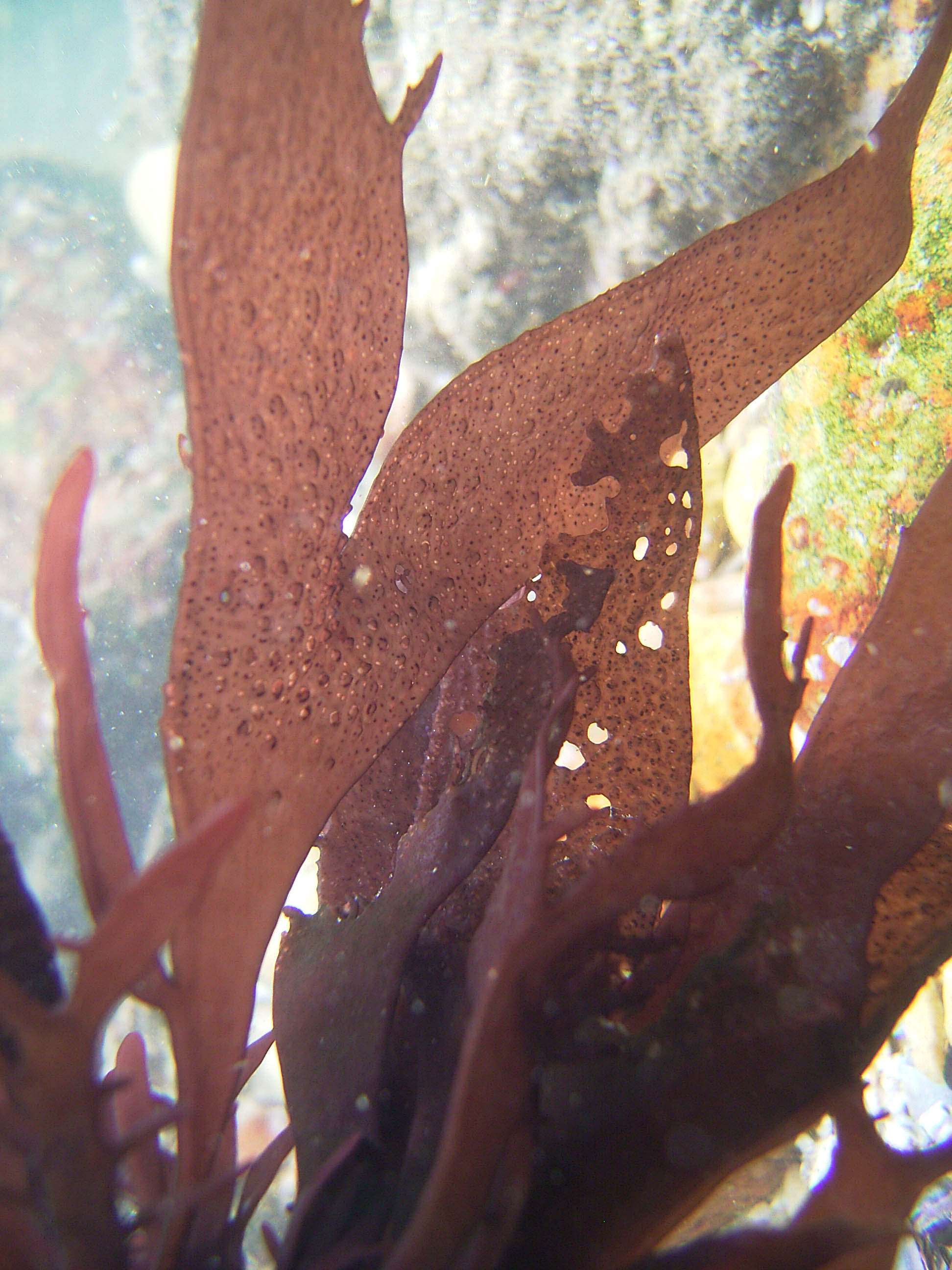
Gigartina paxillata, tetrasporangia visible in fronds as dark dots.
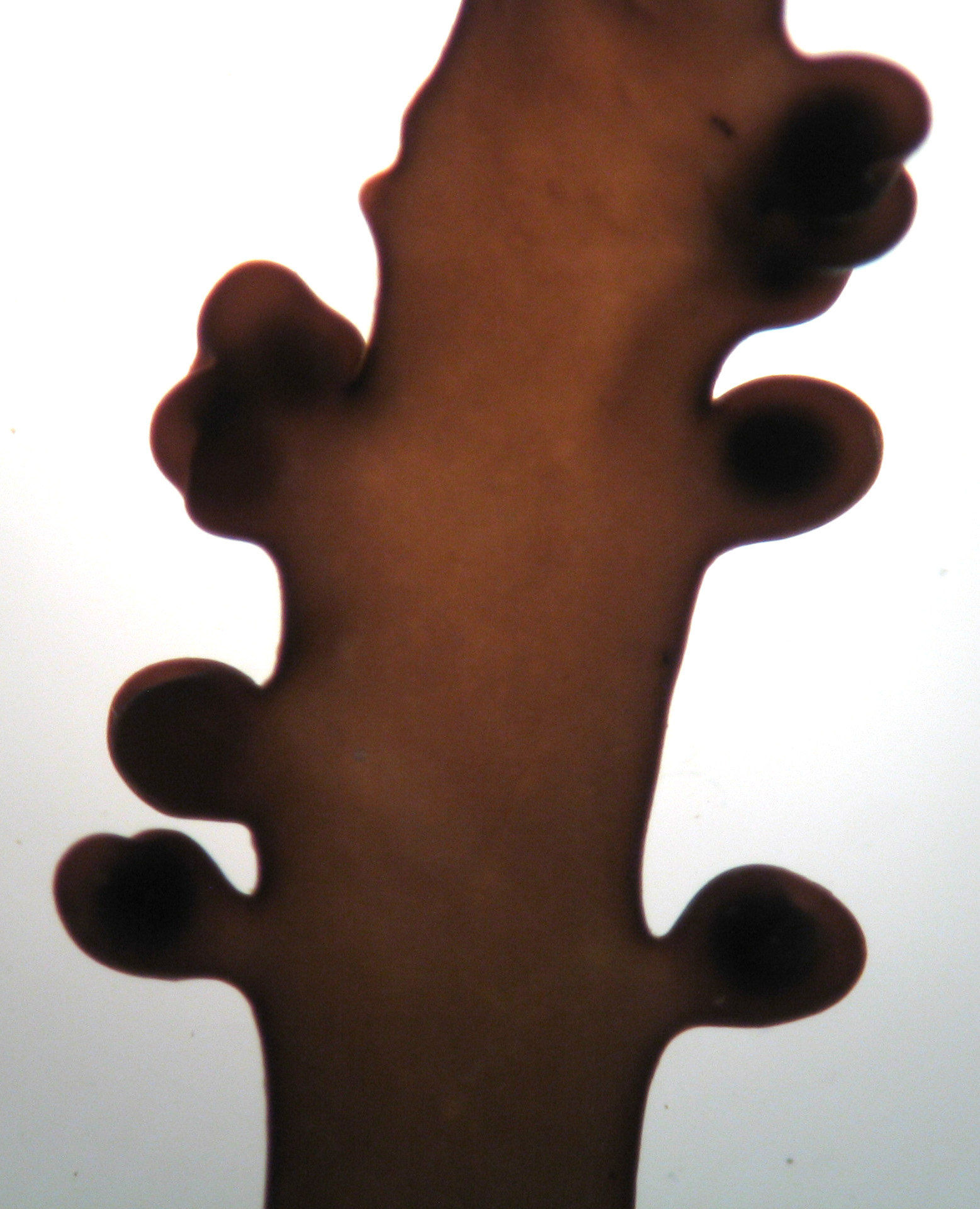
Gigartina paxillata, single female frond (Natures Valley).
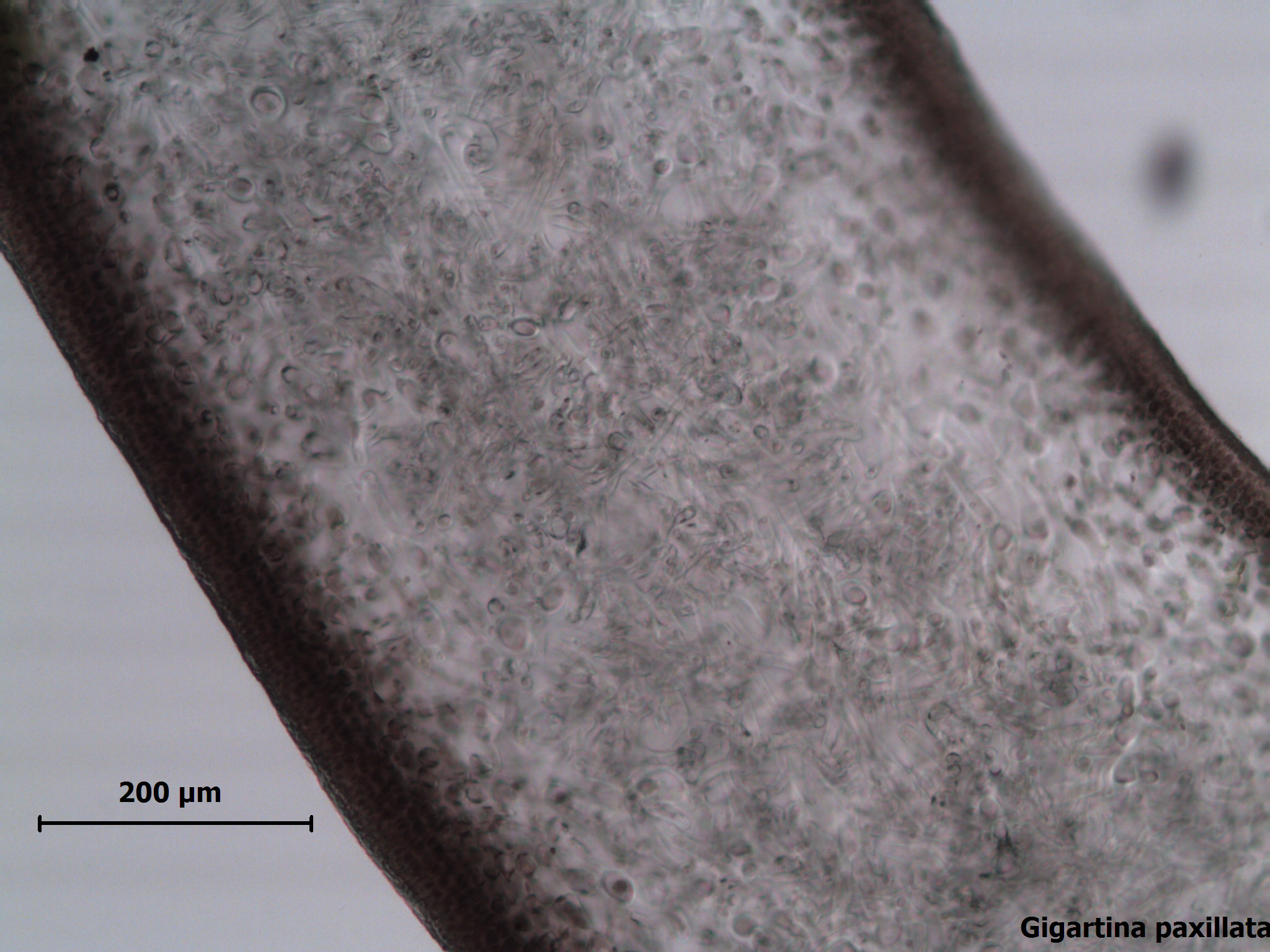
Gigartina paxillata, cross section.
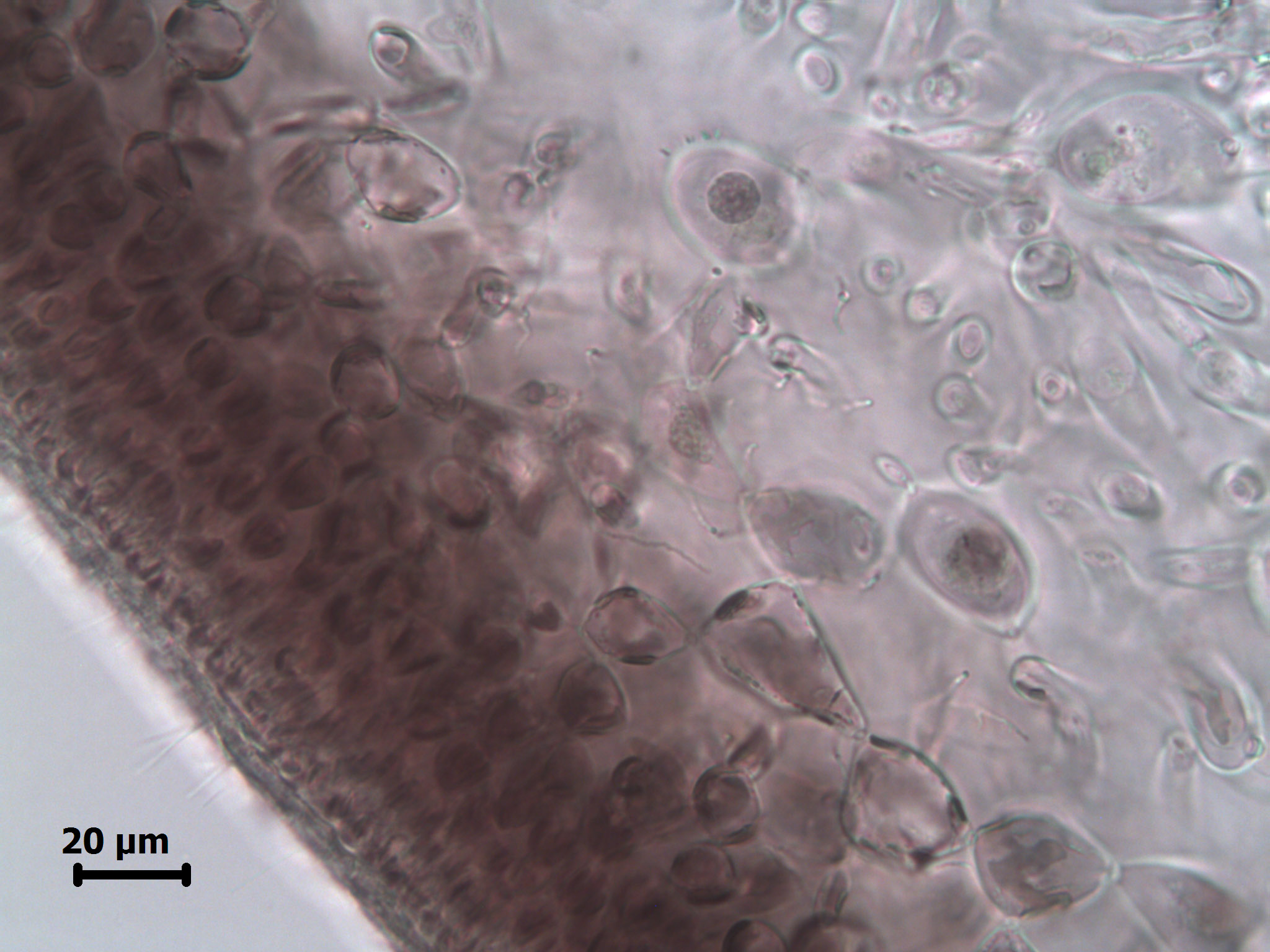
Gigartina paxillata, cross section showing outer layer of medulla and the cortex.
References Gigartina paxillata
Hommersand, M. H., Guiry, M. D., Fredericq, S. & G. L. Leister. 1993. New perspectives in the taxonomy of the Gigartinaceae (Gigartinales, Rhodophyta). Hydrobiologia 260/261: 105-120.
Kylin, H. 1938. Verzeichnis einiger Rhodophyceen von Südafrika. Lunds Universitets Årsskrift, N. F. Avd. 2, 34(8): 1-26, 10 figs, 8 plates.
Levitt, G 1998. Studies on carrageenophytes of the Western Cape, South Africa: ecology, management and systematics. PhD Thesis, University of Cape Town, 183 pp.
Papenfuss, G. F. 1947. New marine algae from South Africa 1. University of California Publications in Botany 23 (1): 116.
Cite this record as:
Anderson RJ, Stegenga H, Bolton JJ. 2016. Seaweeds of the South African South Coast.
World Wide Web electronic publication, University of Cape Town, http://southafrseaweeds.uct.ac.za; Accessed on 07 January 2026.